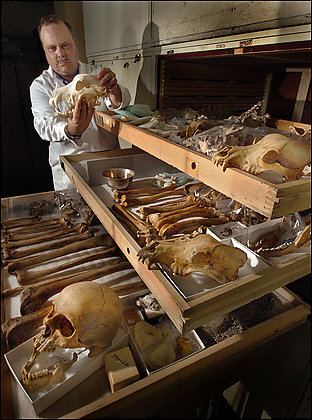
July 26, 2010
Flashback posting from December 2, 2009
The Body Farm. It is the reality behind an era that has given us the much appreciated gift of CBS’ CSI, one of my favorite fictional escapes.
I did not realize that I would know of two people who would someday be graduates of the actual facility. This just got very personal.
I had a long chat with my brother, Jerry Dale Coleman, author of Strange Highways and More Strange Highways, [early in December 2009]. He’s progressing well, post-throat cancer operations, taking on the lifestyle of an African lion ~ often sleeping 23 hours a day.
Anyway, he joked about being “accepted” at the University of Tennessee. His future remains have been approved for final decomposition at UT’s “Body Farm.” He applied to donate his body, and he was extremely happy to have received a return call gladly accepting his contribution to science. He said they were overjoyed to have a six-foot-tall Caucasian male (since folks matching Jerry’s makeup rarely donate their bodies to the Body Farm).
Jerry, a current resident of Tennessee, after he passes away, will be going to the original Body Farm, the University of Tennessee Anthropological Research Facility located off of Alcoa Highway, at the edge of Knoxville, Tennessee, behind the University of Tennessee Medical Center.
I, frankly, hope the day of such a donation will be a long way off. But my brother has foresight in making his decisions and wishes known, of course.
Needless to say, readers of Cryptomundo are well aware that anthropologist and Sasquatch scholar Grover Krantz may be the most famous publicized person to have donated his body to the Tennessee Body Farm. Krantz’s donation and then the later preservation of his skeleton were well covered by the media. (Like my brother who finds himself with throat cancer due to his smoking, Krantz was a chain smoker and died of lung cancer.)

Smithsonian’s Museum of Natural History anthropologist David Hunt is shown opening a green cabinet and pulling out a collection of dog and human bones. That was Grover Krantz in the bottom drawer, and his skull was over to the left, up front. Hunt held one of Krantz’s wolfhounds, which was also in the collection, according to Krantz’s wishes, awaiting reassemblage.
Earlier in 2009, Grover’s bones were placed on display, to capture him again, as a mirror of the following image.
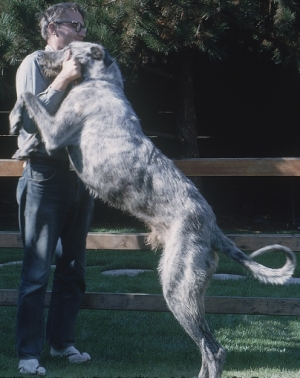
The skeleton model at the Museum of Natural History was based on the above photo of Grover Krantz, a professor of physical anthropology and student of bones at the Washington State University. “It was an outlandish wish,” his wife said recently. But “he wanted his bones someplace. … He thought he would be a good teaching specimen.” (Grover Krantz Papers — National Anthropological Archives.)
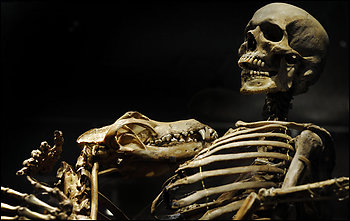
Krantz and his wolfhound, as the scholar wanted to be preserved. (Washington Post photo by Linda Davidson.)
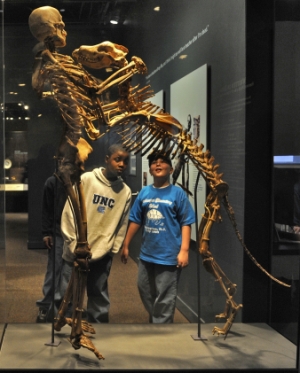
Fifth-graders from Charlotte, N.C., take in the display at “Written in Bone,” a forensic anthropology study, at the Smithsonian Museum of Natural History. The skeletons of professor Grover Krantz and his beloved Irish wolfhound, Clyde, are the realization of Krantz’s ultimate wish. (Washington Post photo by Linda Davidson.)
To read the full story of the Krantz display, see: “Professor’s dying wish granted at Natural History Museum exhibit,” by Michael E. Ruane, The Washington Post.

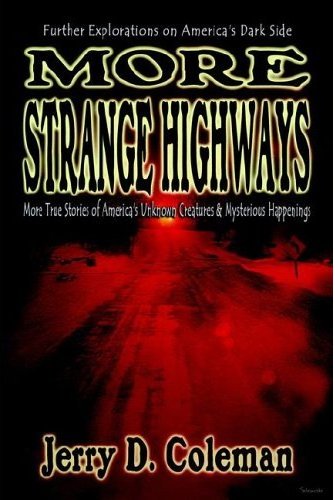
About Loren Coleman
Loren Coleman is one of the world’s leading cryptozoologists, some say “the” leading living cryptozoologist. Certainly, he is acknowledged as the current living American researcher and writer who has most popularized cryptozoology in the late 20th and early 21st centuries.
Starting his fieldwork and investigations in 1960, after traveling and trekking extensively in pursuit of cryptozoological mysteries, Coleman began writing to share his experiences in 1969. An honorary member of Ivan T. Sanderson’s Society for the Investigation of the Unexplained in the 1970s, Coleman has been bestowed with similar honorary memberships of the North Idaho College Cryptozoology Club in 1983, and in subsequent years, that of the British Columbia Scientific Cryptozoology Club, CryptoSafari International, and other international organizations. He was also a Life Member and Benefactor of the International Society of Cryptozoology (now-defunct).
Loren Coleman’s daily blog, as a member of the Cryptomundo Team, served as an ongoing avenue of communication for the ever-growing body of cryptozoo news from 2005 through 2013. He returned as an infrequent contributor beginning Halloween week of 2015.
Coleman is the founder in 2003, and current director of the International Cryptozoology Museum in Portland, Maine.
Filed under Bigfoot, Cryptomundo Exclusive, CryptoZoo News, Cryptozoologists, Forensic Science, Men in Cryptozoology, Obituaries, Sasquatch